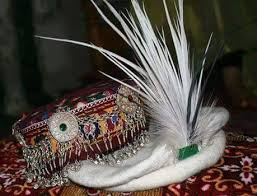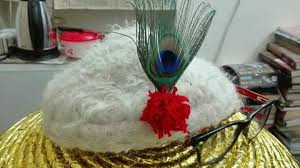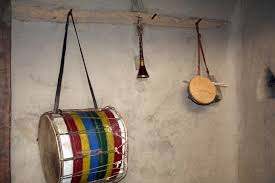A Short Article About Gilgit Baltistan Culture
The cultural heritage of Gilgit Baltistan is rich, beautiful and unique and it manifests in local traditions, music and local dress. The dress plays a central role in identity of a person. Traditional clothing of the region is influenced by local culture, geography and weather. The traditional cap of Gilgit Baltistan has played a major role to define the identity of people of Gilgit Baltistan. The cap has different names in the major local languages. In Shina and Khowar languages the cap is called Khoi ,in brushaski it is called Phartsun or Pharsen and in Wakhi it is called Sekeed.
(Gilgit Baltistan caps for male and female)
The design of cap is slightly different in Baltistan and it is called Nating in Balti.
(balti cap)
Tradtional cap is soft round toped woolen hat. It is made by local artisan and is available in various colors. White caps are most popular in the region and considered as a part of formal local dress. In many areas people specially the older generation still wear their traditional cap all the time with pride. They consider it a sign of honor.
The most striking feature of the cap is the peacock plume and the feather stuck in front or on the side of the cap. It gives a very elegant look to the cap. It is considered a part of formal dress cap and used in groom's dress.
In many parts of Gilgit Baltistan a small fresh flower is stuck in front and side of the the cap. Flower is a symbol of freshness, fragrance and livelihood. When the spring season starts sometimes the farmers and shepherds stuck a pine tree leave to symbolize life. On of the custom of many regions in Gilgit Baltistan is to stuck money into the cap while someone is dancing. This symbolizes the love and respect to the dancer from his friends relatives and fans. The dancer gives this money to the musicians once the dance is finished.
A variety of cultural festivals held in Gilgit Baltistan throughout the year present an exclusive facet of its cultural assortment and different forms of expressions. These festivals represent a number of important recurring merriment, cultural events and religious festival brings value additions to the surroundings. The folk music instruments commonly used in Gilgit Baltistan are Dadang (drum) Damal (percussion) Duff (a circle framed drum) Suranaye(a kind of flute) Ghajak (spiked fiddle) Sitar, Rubab and Gabi (flute).
A majority of the people in Gilgit Baltistan prefer to live in a joint family, which could comprise anywhere between a group of two or more, even over 20 members sometimes. The commanding position in a family is held by the eldest earning male member. He consults other adult members on important issues, but it is his decision that ultimately prevails. However, a lot of importance is also given to the advice of the eldest retired members of the family.
It is the duty of woman to take care of her home. As such, from her very childhood, a girl child is taught cooking, cleaning and dish washing by her mother and other ladies in her family. She is also taught to attend to guests and strangers politely and elegantly because it is thought to greatly reflect upon her upbringing. The traditional arranged marriage has long been an integral part of the Gilgit Baltistan culture as against love marriage. It is the concept in which the parents and family members search for the prospective bride or groom, through their acquaintances or relatives.



Comments
Post a Comment